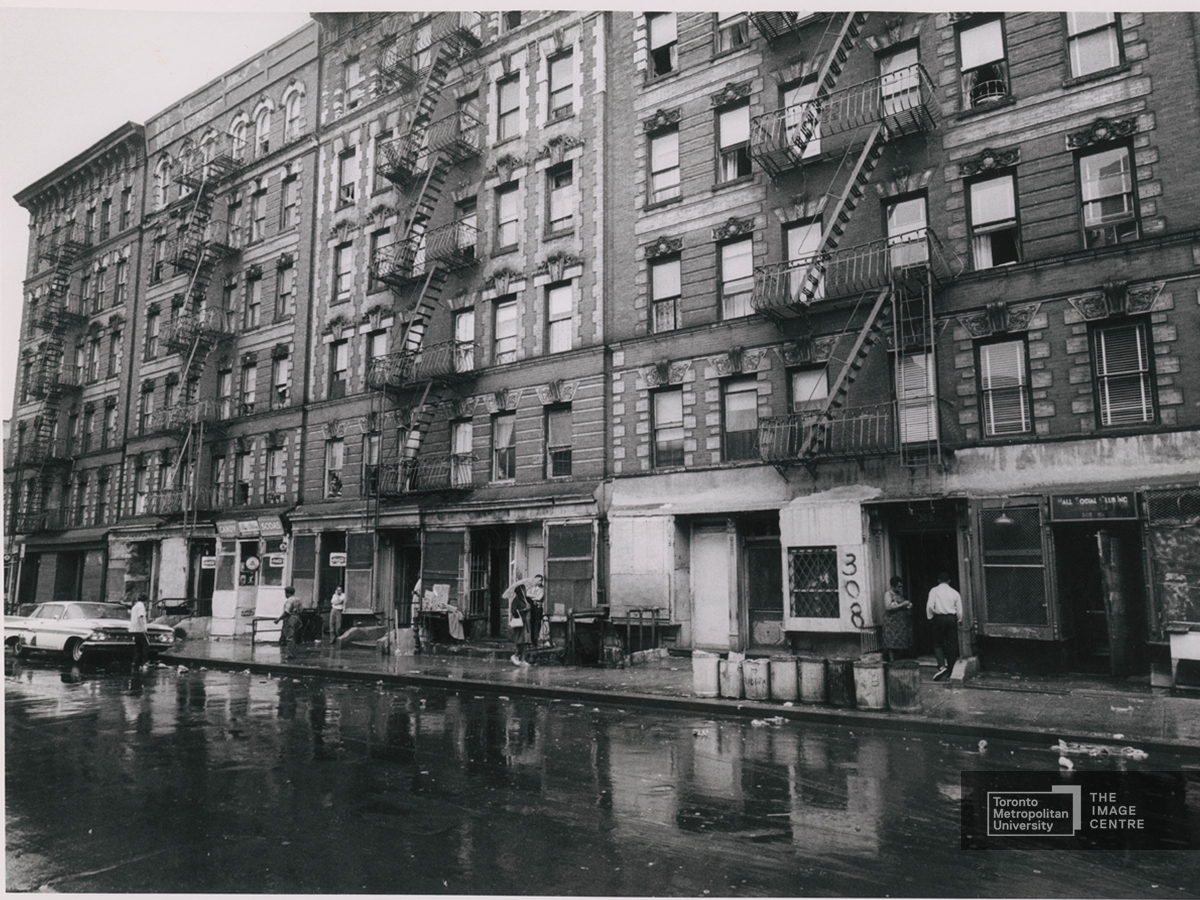Harlem/Southern Bronx
Social Disorganization Theory
Social Disorganization Theory: crime is linked to the physical environment through the breakdown of social controls.
Title: Unknown.
Object Type: photograph
Dimensions: 8 x 10 inches; 20.32 x 25.4 cm
Medium: gelatin silver print
Date: 1967
Location: unknown
Accession No: BS.2005.273462
Photographer: James H. Pickerell, b. 1936 d. unknown
Category: The Black Star Collection, Toronto Metropolitan University. Courtesy of The Image Centre.
Inscriptions: Recto, [no inscriptions]. Verso, handwritten: 29[circled] , USA // New York / Slums; handwritten: Piri Thomas [crossed-out] / Spanish Harlem; [star] / Credit: / Jim Pickerell / from BLACK STAR / 6-67-2564; Please, do not alter / mark or airbrush this / print / --- / Prints must be returned / after use. / Black Star, Library; stamped; STERN / ARCHIV; [illeg.] 23.2

Museum Label by Alison Morrison and Jenae Marryatt , CR8002 : Critical Engagement and Criminological Theories, Winter 2020
This photo, taken by James Pickerell, depicts the Harlem/southern Bronx neighbourhood referred to as Spanish Harlem. A neighbourhood in limbo, Spanish Harlem was populated by a large proportion of Puerto Rican immigrants coming to New York after 1940. New York during this time, like most other urban centres around North America, was experiencing tremendous population growth, and resulting rising crime rates.
The disorganization in the neighbourhood is visible through the garbage on the road, and how the buildings look run down. It is even more important to consider the relationship Spanish Harlem had with the rest of Manhattan during this time. While urban cities across the country, including Manhattan, were expanding and modernizing during this time, Spanish Harlem in particular was experiencing a major influx of poor, Latino immigrants. The majority of Puerto Rican immigrants settled in this neighbourhood due to its low housing costs and familiar cultural makeup. With a lack of community resources and funding, there may not have been many available opportunities for high quality education or high paying employment. In addition, many families were likely disadvantaged or single-parent, meaning children and youth were likely unsupervised a lot of the time. They also may not have had access to good schooling, if the city wasn’t investing in Harlem as much as other neighbourhoods. Therefore, they may not have learned appropriate ways of behaving. In some cases, crime was viewed as an acceptable means of success or, in more extreme situations, survival. Due to the lack of community organization and availability of opportunities within this neighbourhood, citizens could not rely or trust each other to prevent or respond to crime. These structural and social characteristics contributed to the overall state of poverty, disorganization, and disorder during this era in Spanish Harlem.
Bibliography
- Pickerell, J. (Artist). (1967). Spanish Harlem. New York, New York. Black Star Library, Ryerson Image Centre.